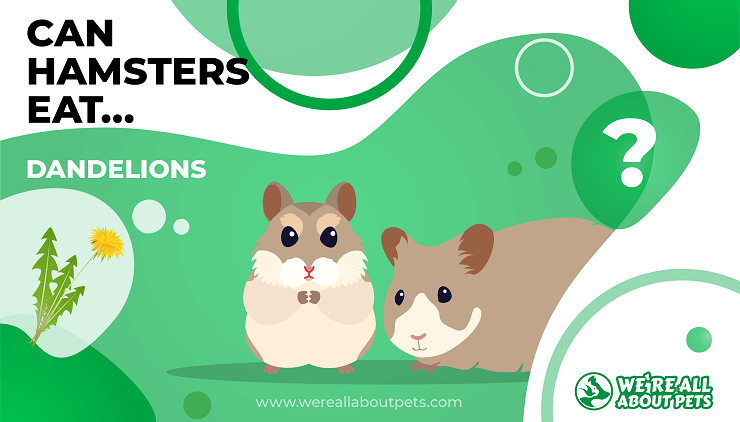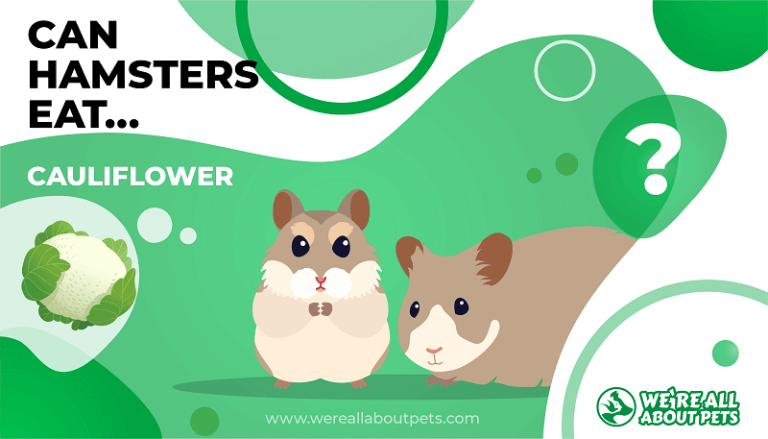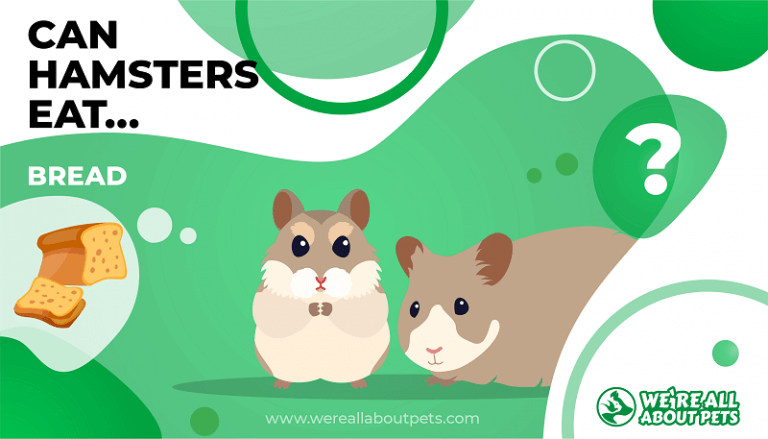Can Hamsters Eat Cabbage?
This page contains affiliate links. We may earn money or products from the companies mentioned in this post through our independently chosen links, which earn us a commission. Learn More
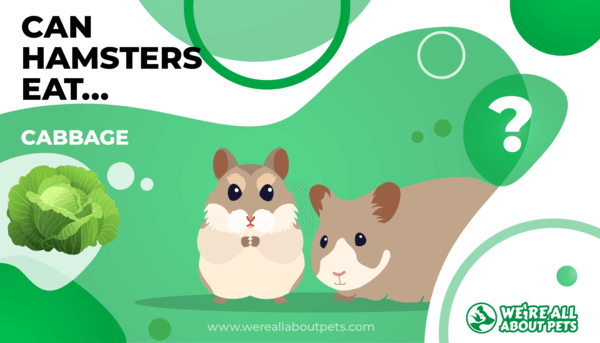
Cabbage is one of the healthiest veggies on the planet – and it’s so versatile that it finds its way into all kinds of recipes. If you’ve got some cabbage and you’re curious about whether you can share it with your little friend, you’ve come to the right place.
As it turns out, you can give cabbage to hamsters!
But how much cabbage can hamsters have, and how often can they eat it? Can they eat different kinds of cabbage, or should they stick to the plain, green variety?
Keep reading for all the answers: We’ve put together a complete guide to cabbage for hamsters.
Cabbage Nutrition Stats
You and your hamster are in luck, because cabbage is low in calories, even though it’s full of fiber and important nutrients!
A one-cup serving of raw cabbage provides approximately:
- 22 calories
- 2 g carbohydrates
- 2 g fiber
- 1 g protein
Cabbage Nutritional Facts
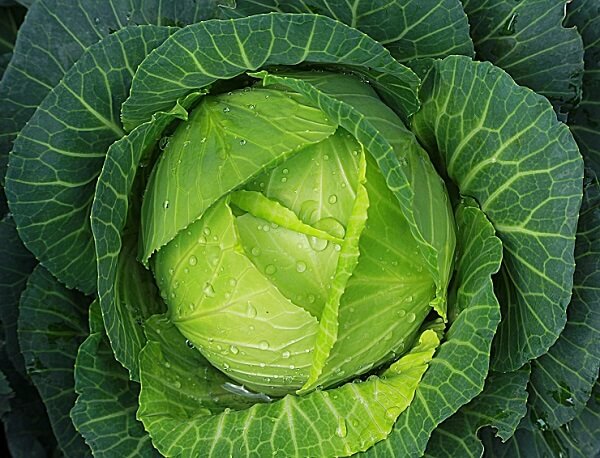
You (and your pet!) need a variety of antioxidants, vitamins and minerals every day – preferably from all-natural sources. Cabbage is a great addition to your diet (and theirs) since it is a great source of nutrients.
That same one-cup serving providing approximately:
- 6 mg vitamin C
- 2 iu vitamin A
- 151 mg potassium
- 6 mg calcium
- 7 mg magnesium
- 4 mg iron
- 3 mcg folate
- 1 mg vitamin E
- 6 mcg vitamin K
- 1 mg phosphorus
Can Hamsters Have Cabbage?
Yes – hamsters can have cabbage and once it has been properly introduced, it’s a veggie that your hammy can eat frequently. Make sure that you wash the cabbage well, and be sure to offer the right amount.
Is Cabbage Good For Hamsters?
Since it is such an excellent source of vitamins, minerals, and antioxidants, cabbage is very good for hamsters. But remember, even the best veggies can cause some trouble for hamsters if you offer too much too soon.
Be sure to introduce cabbage gradually, since hamsters will eat this veggie eagerly and overdoing it can lead to gas and diarrhea.
Do Hamsters Like Cabbage?
We’ve never met a hamster that didn’t like cabbage! This doesn’t mean that there are no outliers but we’re quite confident that most hamsters approve of this veggie once they’ve given it a try.
How Much Cabbage Can A Hamster Eat?
After your hammy gets used to eating cabbage, they might really be able to pack it away.
Here’s how much cabbage a to feed your hamster:
| Age | Amount |
| Baby hamster | None |
| Adult hamster | 1 or 2 teaspoons of roughly chopped cabbage |
As a general rule, you can give your hamster up to two teaspoons of chopped leafy greens – depending on their size! The tiniest hamsters such as dwarf hamsters and robo hamsters need less than larger Syrian hamsters.
if your hamster normally eats vegetables, it’s fine to give them a full serving of cabbage right away. If they’ve never eaten vegetables before, you’ll want to start with something a bit milder and less likely to cause gas.
Each time you introduce a new food to your hamster, watch for signs of bloating, gas, and diarrhea. Cabbage can cause these side effects and if you see them, it’s important to offer less next time and monitor your hamster again.
While most hamsters can eat cabbage with no trouble at all, it’s best to take a careful approach and safeguard your pet’s health.
How Often Can A Hamster Eat Cabbage?
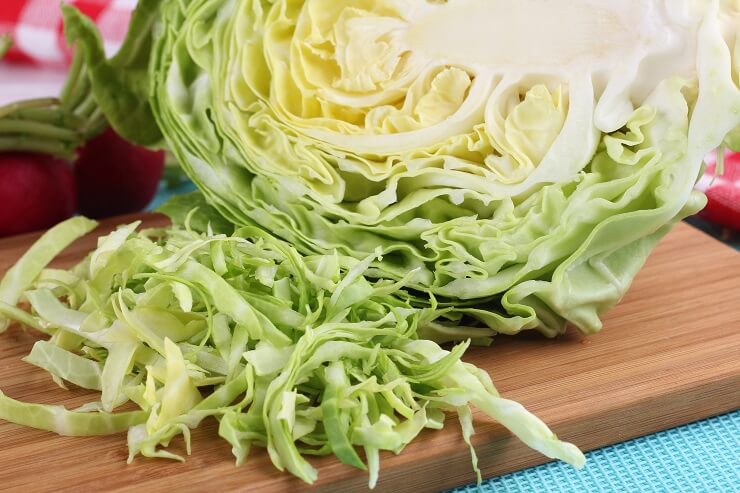
Your hamster might like to eat cabbage every day and eventually, you might want to include it as part of their daily diet. Do remember to offer a variety of foods and don’t overdo the fresh veggies and fruits – too much can cause dietary imbalance and lead to health problems.
- If you just brought your hamster home from the pet store, they probably haven’t been introduced to fresh food. This means that you’ll want to take things slowly – and give them something like cucumber or spinach to introduce them to veggies. Offer only a tiny amount of veggies every other day for the first week while watching for signs of gastric distress including diarrhea. You can gradually increase the amount of fresh food over the second week and offer them a tiny bit of cabbage beginning in the third week.
- Don’t give your hamster cabbage at the same time as you offer other foods that can cause gas, i.e. broccoli or cauliflower, or anything very high in sugar.
The Correct Diet Is Important
Wild hamsters eat an omnivorous diet that consists of insects, worms, seeds, and a variety of plants. The odds are good that if a wild hamster encountered cabbage, they’d eat it happily!
Besides leafy greens such as cabbage, here’s what to feed a hamster for good health:
- A daily portion of hamster pellets. Choose a quality brand and check the label to determine how much to feed your hamster each day.
- Timothy hay: Even though fresh hay isn’t a requirement, it’s something your hamster will really appreciate having – and it’ll help your pet’s health in more ways than one. Hamsters use hay for tunneling, they add it to their nests, and they nibble on it. All of these activities are good for your hamster’s mental health and the nibbling is great for their teeth.
- One teaspoon of birdseed every week.
- Very small amounts of fruit and vegetables, just as much as your hamster can eat at one time. Extras need to be removed right away so that they don’t spoil or become moldy, as can happen if your hamster has the opportunity to hoard them in their bedding.
- Unlimited amount of clean, fresh water; be sure to rinse and refill your hamster’s drinking bottle at least once a day.
Last – but just as important as everything else – your hamster needs safe chewable items. Hamsters teeth are always growing, and gnawing prevents them from becoming overgrown, painful, and perhaps even infected.
Offer items such as untreated softwood, coconut shell, hay cubes, or unbleached loofah and keep them in your hamster’s habitat 24/7.
What Are Other Healthy Alternatives To Cabbage In A Hamster’s Diet?
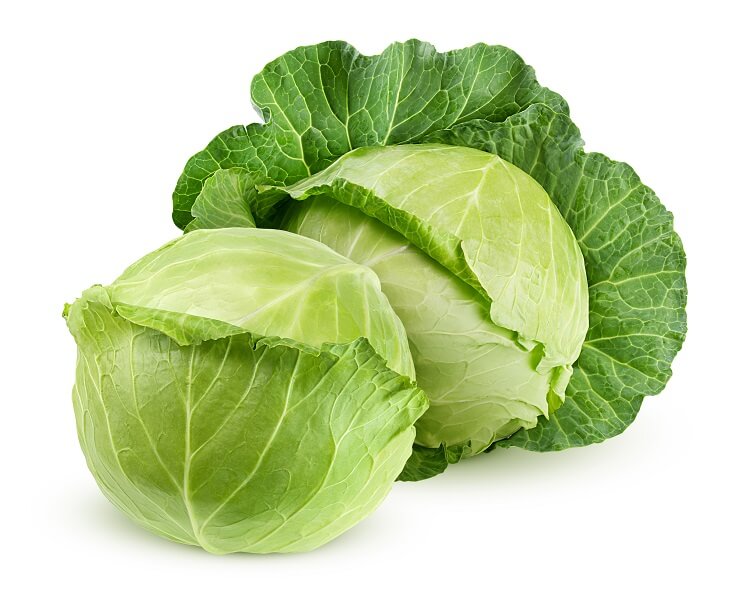
Even though cabbage is a healthy addition to your hamster’s diet, these animals love variety and do best when they’re offered lots of different things to eat over the course of each week.
Here are some veggies hamsters like most:
- asparagus
- baby corn
- artichoke
- sweet corn
- basil
- cilantro
- mint
- parsley
- carrot
- carrot tops
- romaine
- potato (cooked only)
- beets
- beet tops
- sprouts
- arugula
- swiss chard
- spinach
- endive
- escarole
- butter lettuce
- bibb lettuce
- rocket
- buttercrunch lettuce
- green beans
- cucumber
- summer squash
- winter squash
- pumpkin
- bell pepper
- zucchini
- celery
- parsnip
- sweet potato
- tomato
- broccoli
- broccolini
- cauliflower
- okra
- bok choy
- yu choy
- watercress
Even though many of the same foods that benefit you are great for your hamster, too, some things that seem healthy are actually toxic to hamsters.
Research new items before you offer them to your hamster, just to be on the safe side, and to find out how much and how often to offer each food.
For now though, giving your hamster cabbage is a great way to make life more interesting while adding even more nutrition (and flavor) to their day!
Frequently Asked Questions
Is cabbage safe for hamsters?
Yes. Cabbage is safe for your hamster so long as you wash it well and provide the right amount.
Can cabbage make my hamster sick?
Yes, but only if your hamster eats too much at once, or if you forget to introduce it to their diet slowly.
Can hamsters eat red cabbage?
Yes! Hamsters can eat all kinds of cabbage including red cabbage, purple cabbage, savoy cabbage, napa cabbage, and Chinese cabbage. Bok choy, yu choy, and brussels sprouts are other members of the cabbage family and all three are also fine for hamsters to eat.






